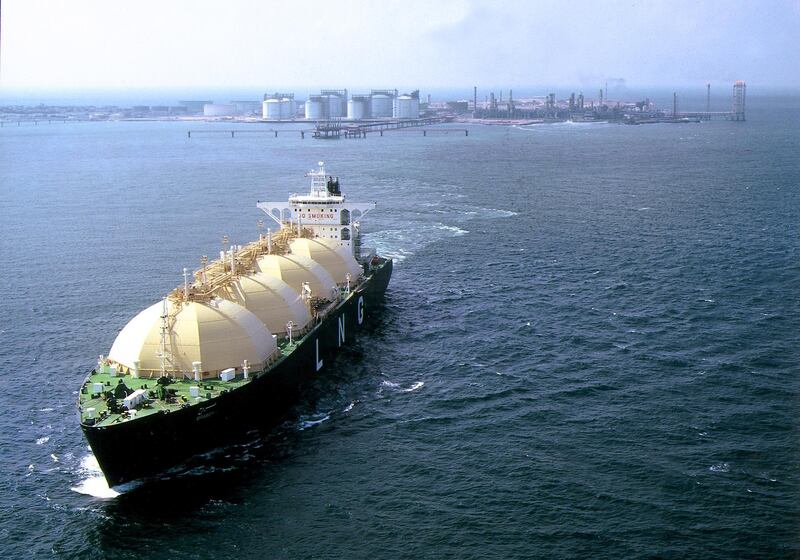Gas is in fashion in the Middle East. The region’s major national oil companies have announced ambitious plans to find, produce, transmute and export more.
But for the fuel to complement and ultimately supplant oil, a roadmap is required for the evolution.
Every one of the major Middle East producers’ gas reserves life at current production rates exceeds their oil reserves life. The UAE has 98 years of gas versus 68 years of oil; Iraq more than 120 years of gas compared to 90 years of oil. And as less attention has been paid historically to finding gas, they have the potential to boost reserves further.
Adnoc announced last month an updated gas strategy, covering the development of sour gas (containing toxic hydrogen sulphide), producing unconventional gas for the first time, boosting gas use in petrochemicals, and aiming for national self-sufficiency. It also awarded a 10 per cent stake in its offshore sour gas fields to Germany’s Wintershall, which will partner Eni of Italy.
Saudi Aramco plans to invest $150 billion over a decade to expand raw gas output from 14 billion cubic feet per day to 23 billion. It will also develop unconventional gas and is looking at investing in Russia’s Arctic-2 liquefied natural gas export project.
Meanwhile, despite leaving Opec, the world’s largest LNG exporter, Qatar, has expanded plans to boost its current 78 million tonnes per year capacity to 110 million. Bahrain announced discoveries of gas deep beneath the island, as well as offshore unconventional oil and gas. Kuwait is developing deep, sour light oil and gas in the country’s north. And Oman, the regional pioneer of tight gas (from low-permeability reservoirs, requiring hydraulic fracturing), has set gas production records via BP’s Khazzan project, and Shell and Total plan a series of investments there, including using LNG to fuel ships.
Even Iraq, long the regional laggard, is gradually boosting capture of flared gas, a by-product of oil production, to feed its underperforming power plants.
The NOCs are pivoting in the direction of the big international firms such as Shell, Equinor and Total, which now produce as much or more gas than oil. With ever-growing concerns over climate change and predictions of “peak oil demand” in the 2020s or 2030s due to the rise of electric vehicles, gas seems a safer bet.
Gas produces about 25 per cent less carbon dioxide per unit of energy when burned than oil and much lower other pollutants. Relatively cheap and abundant, a newly globalised business means it can quite readily be transported worldwide. It can generate electricity; fuel cars, lorries and ships either directly or by charging batteries; heat homes and drive industries; and be converted to petrochemicals.
Gas demand growth is quite strong but faces headwinds, mainly from environmentalists. In many Asian countries, coal remains cheaper than gas, if its pollution is ignored. Chinese tariffs would make it difficult for US LNG to compete there. Renewable electricity generation is getting ever cheaper and competes increasingly with gas in windy and sunny areas. Such dynamics suggest two outcomes for future gas.
_______________
Read more:
Polish coal communities in shadow of UN climate talks lament loss of a way of life
Listen:
Business Extra podcast: Why Qatar is breaking ranks with Opec
_______________
In the “dead end” view, which many environmentalists would espouse, gas will be replaced by renewable energy from now onwards. Home heating and cooking will be done by electricity and perhaps by “bio-gas” or “biomethane” derived from plant matter and manure.
Or, gas could be a “bridge fuel”, replacing coal and oil in the medium-term to reduce emissions but then being overtaken by renewable energy and electrified transport from the 2040s onwards. That is just the lifetime of a major gas platform or LNG plant away. Gas would preserve its role as a petrochemical feedstock, for now, but would have to compete with oil.
But there is a third possibility. The gas industry should articulate a positive vision and not be defensive about its product. Skilful communication has to be underpinned by huge climate-friendly research and investment. Such a vision would be of gas as a “destination fuel”, a long-term component of the energy mix. ExxonMobil and the US Energy Information Administration, for instance, see world gas demand passing 100 million barrels of oil equivalent, the current level of oil production, by the 2040s.
That would require keeping gas reasonably cheap, partnering resource holders with skilled expertise and completing a truly global market, including free trade in and out of the Middle East and the former Soviet Union. The Middle East Gas would have to supplant coal in China, India and South East Asia, and spread across Africa.
Methane leaks would need to be drastically reduced; in September, 13 leading oil companies in the Oil and Gas Climate Initiative, with Aramco the only Middle East representative, pledged to cut emissions.
Most of all, gas use would have to be accompanied by carbon capture and storage (CCS) to protect the climate, such as Adnoc’s planned expansion of its current successful Al Reyadah venture. High-efficiency gas electricity generation with integral carbon capture, like that of Net Power in the US, could be the answer. Transforming gas to hydrogen and capturing the carbon dioxide released would produce the ultimate clean fuel for planes, ships, industry and home heating.
Such a plan requires an ambitious combination of communication, politics, technology, investment and commercial savvy.
For those with abundant gas, it is the best way to assure a long-term future for today’s big plans.
Robin M Mills is CEO of Qamar Energy, and author of The Myth of the Oil Crisis






